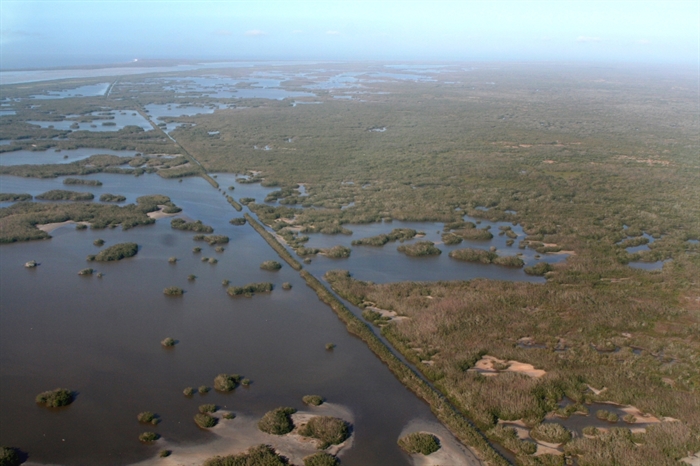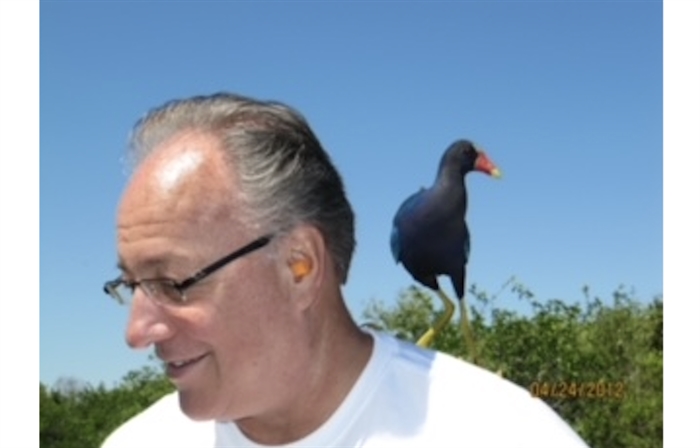
(DON THOMPSON / iNFOnews.ca)
September 12, 2022 - 12:00 PM
OPINION
On occasion, friends here - knowing I was born, raised and now spend Winters in Florida - ask me what they should see and do during a visit to the Sunshine State. Try as I might to not disappoint them, when some hear that Disney World isn’t in my Top Ten list…I can see it in their faces.
Of course, I understand the appeal of “The Happiest Place on Earth”…especially if kids or grandkids are in your entourage. I’m not so jaded that I don’t recognize the fact that anyone who steps into Disney World leaves all their worries at the gate for a while.
The characters, rides, parades, fireworks, food and more logo merchandise than you can carry or afford create a magical feeling. Children have the time of their young lives and adults feel like children again. Hey, Disney rivals Coca-Cola as the most recognized pleasure brand worldwide…so, I get it.
But, I’m sorry…it’s just not one of the best things about Florida. Instead of multiple theme parks, pack some light-weight long pants and long-sleeve shirts, hats, sunscreen and bug spray, grab the kids…and head to the Everglades.
If you spend as much time as your dog outdoors, you might consider a week-long kayaking trip through the ‘Glades…stopping with your mosquito-net tent at various oyster-shell mound campsites or “chickees”…stilt platforms above the water with a roof but no walls.
Even if you’re not the National Geographic outdoors poster-child - and paddling 15 miles a day isn’t the real you - you can tour the Everglades for a day or two and never get your feet wet.

Millions of birds, reptiles, fish and mammals inhabit the 1.5 million-acre Everglades. An aerial view shows miles of sawgrass on the world’s widest river, the Everglades.
Image Credit: Courtesy of the National Park Service
I was probably ten years old when I first glimpsed the Everglades. It was full of alligators, birds you saw nowhere else in Florida, including Flamingoes, fish, bears, raccoons, panthers and snakes. It was a natural wonderland…Florida’s first and best theme park.
I remember a flock of Flamingoes inflight so dense - like a huge cloud - that you couldn’t see the sun. Alligators would float aimlessly through the grass before disappearing beneath the waters…sometimes for minutes…or hours.
The Everglades is a unique ecosystem…it occurs nowhere else on Earth. That alone makes it special…and deserving of our protection. You can visit eight different habitats there, including hardwood hammocks, coastal lowlands and marine waters. But it is the mangroves, sawgrass prairies and freshwater sloughs that draw water from Lake Okeechobee and channel it to the Florida Bay that are most impressive.

Columnist Don Thompson on an airboat (note earplugs) on a visit to the Everglades in 2012. The wild Marsh Hen - one of 300 species of birds - flew in, landed on his shoulder before foraging for more mosquitoes.
Image Credit: Photo Courtesy Don Thompson
While famous for alligators, even today the Everglades has more than 350 species of birds, 300 species of fresh and saltwater fish, 50 reptile species, 40 mammal species and 36 endangered species.
The Everglades is not a swamp. It is, in fact, a 60-mile-wide fresh-water river that flows from north to south for more than 100 miles. If you got out of your kayak or airboat - not advisable…and illegal in the actual Everglades National Park - you can stand with your head above water most places. In fact, more than half of the 7,800 square miles is less than 18 inches deep in water.
There are two seasons…Summer and Almost Summer. Summer - more or less the traditional season from April to October - is wet...getting three-fourths of the area’s 60 inches of rainfall. Almost Summer…is dry. And while mosquitoes can be pesky - especially during the rainy season - they are essential to the Everglades food chain.
The Everglades’ grassy prairies are covered in six-foot tall sawgrass that sways with the warm breezes…but whose narrow, razor-like blades can easily rip through clothing or skin.
However, sawgrass is not the most dangerous aspect of the Everglades. About 200,000 alligators and 3,000 crocodiles call it home. Alligators - relatively speaking - aren’t dangerous except during mating season…April and May. But crocodiles grow up to 15 feet long and 900 pounds…and, well, they aren’t friendly anytime.
If you enter the Everglades near Homestead, FL on the East coast you’ll witness one version of the Everglades…then drive across the 80-mile stretch of I-75 called “Alligator Alley” between Fort Lauderdale on the Atlantic coast and Naples on the Gulf Coast. You’ll see hundreds of alligators sunning themselves, as well as Osprey and Bald Eagles nesting or gliding high above before entering the Everglades in Everglades City.
Before they started draining the Everglades - they being the U.S. military - it was twice as large. But the U.S. government - intent on controlling the Seminole Indians - wanted to put them on a reservation as it did with the tribes on the Great Plains.
Corrupt government and greedy special interests continued to drain and claim land for housing development and to subsidize the sugar cane industry. The rich and powerful almost ruined the Everglades.
While the Everglades was home for Native Americans, newly-freed slaves, naturalists, poachers and pioneering settlers in the 1800s, by 1900 - and for nearly 50 years - hunters flocked to the Everglades to kill birds for feathers for the fashion industry.
Still, today the Everglades remains a mesmerizing natural wonder…in some ways it is better than when I first saw it. There are more than 100 Florida panthers now…up from 20 when I was a boy. Public interest groups and citizens who care are working hard to preserve it for future generations.
It’s not likely you will see flocks of Flamingoes larger than clouds on the horizon. You’ll only see a small gathering if you’re really lucky…that after a two-hour airboat ride deep into the ‘Glades. But you’ll see things you won’t see at Disney World.
And when you’re there, use your imagination and ponder for a few moments one of nature’s best places on Earth….and then, take another moment…and give thanks that it’s still there.
— Don Thompson, an American awaiting Canadian citizenship, lives in Vernon and in Florida. In a career that spans more than 40 years, Don has been a working journalist, a speechwriter and the CEO of an advertising and public relations firm. A passionate and compassionate man, he loves the written word as much as fine dinners with great wines.
We welcome your comments and opinions on our stories but play nice. We won't censor or delete comments unless they contain off-topic statements or links, unnecessary vulgarity, false facts, spam or obviously fake profiles. If you have any concerns about what you see in comments, email the editor.
News from © iNFOnews, 2022